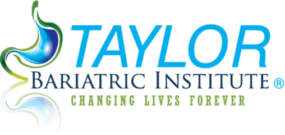What are Gallstones?
Gallstones are small, hard deposits of digestive fluid that develop in the gallbladder, which is located on the right side of the abdomen underneath the liver. The gallbladder is a small, pear-shaped organ that holds bile, or digestive fluids that are released into the small intestine. Gallstones range in size, and can be anywhere between the size of a grain of sand to a golf ball. Many people only develop one gallstone, while others develop a collection of gallstones at one time.
Gallstones develop for a variety of reasons. One of the leading reasons for gallstones to form is that your bile contains too much cholesterol. These types of gallstones are known as cholesterol gallstones, and develop when the liver excretes a greater amount of cholesterol than your bile can successfully dissolve. This leaves excess cholesterol, which often forms into crystals and eventually into stones in the gallbladder. Another main cause of gallstones is an overabundance of bilirubin in your bile. Bilirubin is produced when red blood cells are broken down in your body. If your liver makes too much bilirubin then gallstones could develop. These types of gallstones are known as pigment gallstones, and often develop as a result of disease such as cirrhosis of the liver, biliary tract infections or certain blood disorders. Gallstones can also form as a result of the gallbladder failing to empty itself correctly.
Symptoms of Gallstones
In many cases, gallstones do not show any signs or symptoms. Symptoms generally only develop if a gallstone causes a blockage by lodging in a bile duct. In this case, symptoms are classified by sudden, intense pain in the upper right portion and center of the abdomen, the right shoulder, and the back between the shoulder blades.
Being overweight or obese increases your risk of developing gallstones, as does losing weight very quickly. To decrease your risk of developing gallstones as a result of obesity it is important to pursue healthy weight loss with medical supervision.
Other factors that increase your risk of developing gallstones include:
- Being over the age of 60
- Being female
- Eating a diet that is high in fat, high in cholesterol, and low in fiber
- Having a family history of gallstones
- Having diabetes
- Being pregnant
- Being of Native American or Mexican-American descent.
Treatment for Gallstones
In cases where the gallstones develop but do not present any symptoms treatment is often not necessary. At this time your physician will warn you of complications and possible symptoms and will watch to see how the condition progresses. If the gallstones do begin to show symptoms there are two types of treatment available. In certain situations, medications can be prescribed to dissolve gallstones. This type of treatment is generally only recommended for patients that cannot undergo surgery, as this could take several months or even a few years to fully dissolve the gallstones. Surgery for gallstones involves the entire removal of the gallbladder, a procedure called a cholecystectomy. This is done because gallstones reoccur, and the gallbladder is not a necessary organ for survival. The gallbladder does not affect your body’s ability to digest food. After the gallbladder is removed, bile travels directly from your liver to your small intestine.
Suggested Reading
How Minimally Invasive Bariatric Procedures Are Changing Lives
Nutritional Guidelines for Bariatric Surgery Preparation: Ensuring the Best Outcomes
Navigating Your Weight Loss Journey: When to Consider Weight Loss Therapy
Also In This Section
- Understanding the Risks and Rewards of Gastric Sleeve Revision Surgery
- Gastric Bypass Surgery: Deciding If It’s Right for You with a Specialist’s Guidance
- The Connection Between Bariatric Surgery Psychology and Long-Term Weight Loss
- 5 Essential Supplements to Consider for Your Gastric Bypass Nutrition Plan
- The Role of Nutrition in Recovering from Gastric Bypass Surgery
- Top Reasons to Consider Lap Band Surgery in Michigan for Your Weight Loss Journey
- The Benefits of Surgical Weight Management: What You Need to Know
- Long-Term Success with Weight Loss
- Eating and Exercise Behavioral Changes to Lose Weight
- Weight Loss Doesn’t Come in a Can
- Sleep better to lose weight after weight loss surgery
- Set Up your Home for Weight Loss Surgery
- Bariatric Surgery Benefits Older Adults
- Sleep Better after Weight Loss Surgery
- Getting Active in the Cold
- How to Boost Your Health After Weight Loss Surgery
- Setting Realistic Goals After Surgery
- Eating in Restaurants After Weight Loss Surgery
- Can Being Overweight Hurt You in the Workplace?
- Strategies to Add Activity and Burn Calories after Bariatric Surgery

